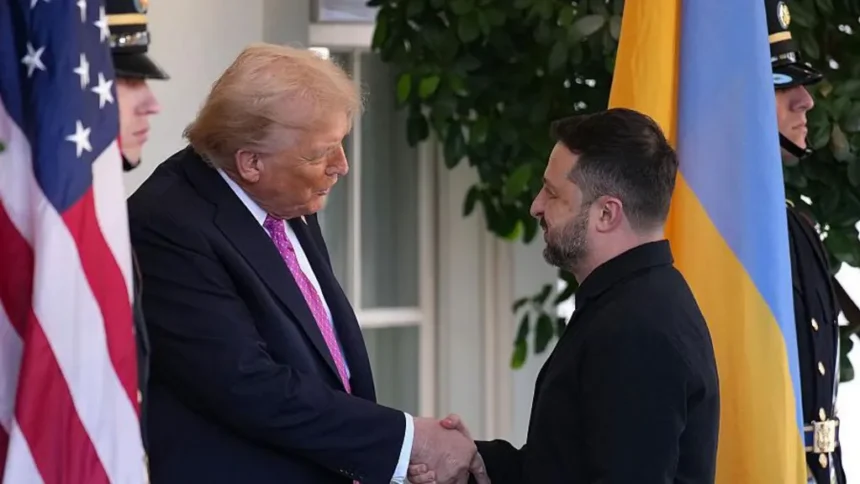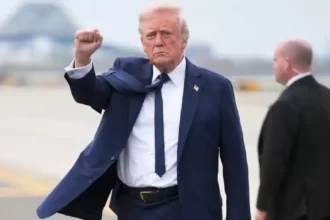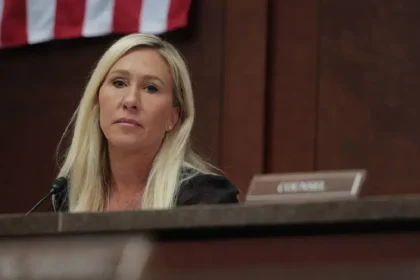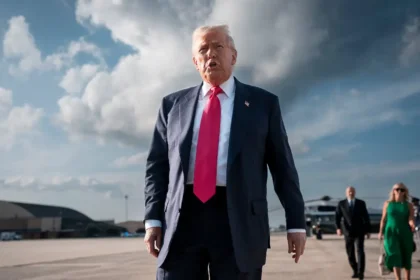In a closely watched meeting at the White House, President Donald Trump signaled restraint in escalating U.S. military support for Ukraine, declining to immediately provide Kyiv with the long-range Tomahawk cruise missiles requested by President Volodymyr Zelensky. The decision underscores Trump’s cautious approach toward deepening America’s involvement in the ongoing war and reflects his continued emphasis on diplomacy over military escalation.
Zelensky, who has repeatedly called for advanced weaponry to target Russian infrastructure and weaken President Vladimir Putin’s war economy, left Washington without a firm commitment. The Ukrainian leader confirmed that the issue of Tomahawk missiles was discussed but said both sides agreed not to make any public statements “because the United States does not want an escalation.”
Following the meeting, President Trump took to social media, calling on both Kyiv and Moscow to “stop where they are” and focus on ending the war. His comments echoed earlier statements suggesting that halting combat operations along existing front lines could pave the way for broader peace negotiations.
The Trump-Zelensky summit followed a phone conversation between Trump and Russian President Vladimir Putin, in which the two leaders reportedly agreed to meet soon in Hungary. The timing of these discussions has raised speculation that the White House is pursuing a two-track strategy—maintaining diplomatic dialogue with Moscow while pressing Ukraine toward a ceasefire.
At a press briefing after the meeting, President Trump was non-committal when asked about supplying Tomahawks to Ukraine. “Hopefully they won’t need it,” he said. “Hopefully we’ll be able to get the war over without thinking about Tomahawks. I think we’re fairly close to that.” He described the missiles as “a big deal,” adding that they are vital for America’s own defense and that providing them could risk escalating the conflict.
When asked whether Putin’s potential meeting in Hungary was influenced by the Tomahawk discussions, Trump responded, “The threat of that is good, but the threat of that is always there.”
Zelensky, seeking to demonstrate flexibility, suggested that Ukraine could offer U.S.-made drones in exchange for Tomahawks—a proposal that drew smiles and nods from Trump. He also praised the U.S. president for his recent diplomatic breakthroughs in the Middle East, expressing hope that the same momentum could extend to Ukraine.
Speaking to reporters after the meeting, Zelensky was candid about his mixed feelings. Asked whether Putin’s planned meeting with Trump was an effort to buy time, Zelensky replied, “I don’t know.” He emphasized that the mere possibility of Ukraine obtaining Tomahawks had already alarmed Moscow, calling the weapon “a strong deterrent.”
Pressed on whether he was leaving Washington more optimistic, Zelensky simply said, “I am realistic.”
In remarks that appeared to align with Trump’s call for a pause in the fighting, the Ukrainian president acknowledged, “We have to stop where we are. He is right, the president is right.” He added that the next step would be to open direct talks.
Shortly after the meeting, Zelensky posted on X (formerly Twitter), saying that he had briefed European leaders about his discussion with Trump. He wrote that Ukraine’s “main priority now is to protect as many lives as possible, guarantee security for Ukraine, and strengthen all of us in Europe.”
UK Prime Minister Keir Starmer described his conversation with Zelensky as “productive,” pledging continued humanitarian aid and military support to Kyiv. European capitals, while supportive of Trump’s push for diplomacy, have urged the U.S. not to abandon Ukraine’s defense needs entirely.
Meanwhile, Putin has warned that any decision to supply Tomahawk missiles to Ukraine would “seriously damage” U.S.-Russia relations. His recent phone call with Trump was described by the Kremlin as “constructive,” with both leaders agreeing to meet in person, though no date has been set.
Reporters pressed Trump on whether he feared that Putin might be using the prospect of talks as a stalling tactic. “I am,” Trump admitted. “But I’ve been played all my life by the best of them, and I came out really well. So, it’s possible, a little time it’s alright. But I think that I’m pretty good at this stuff. I think that he wants to make a deal.”
Asked whether Zelensky would join the upcoming talks in Budapest, Trump seated beside the Ukrainian leader—acknowledged “bad blood” between Zelensky and Putin but said, “We want to make it comfortable for everybody. We’ll be involved in threes, but it may be separated. The three leaders have to get together.”
The meeting underscored Trump’s evolving foreign policy approach—balancing support for allies with a renewed focus on diplomacy and national interest. As the world watches, the question remains whether this latest round of high-stakes negotiations will lead to peace or simply delay the inevitable continuation of a war that has reshaped global alliances and tested America’s strategic resolve.











